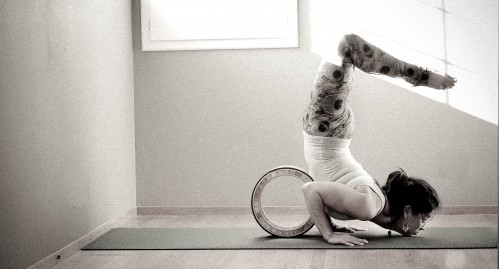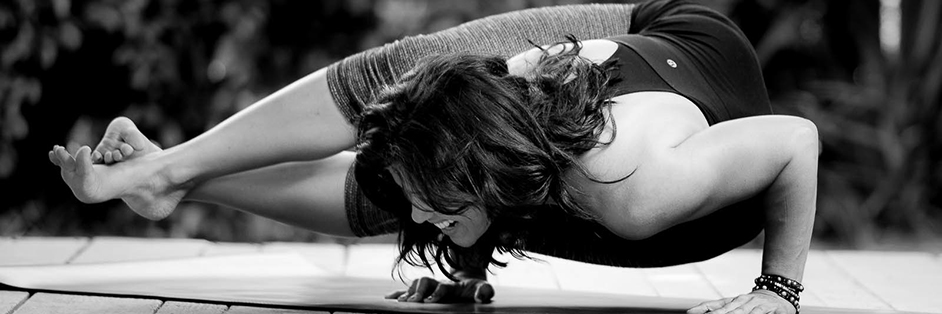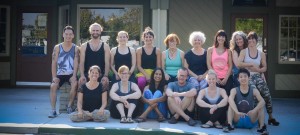a different kind of year in review
After reading through random pages in my practice journal from the past 12+ months, I have come to realize a few things about my practice:
- I am always sore.
- Alignment is first and foremost on my mind.
- I have less of a tendency to measure my own progress by watching those around me.
- I no longer feel unimportant if I don’t get assisted in my practice.
- One eye in; one eye out is not impossible.
- Laziness is in the eye of the critic; I work hard and then bash myself for not working harder.
- Although I still cannot jump through or jump back, I have indeed made progress.
- No matter how sore I am, yoga always makes me feel better.
Bent Over Backwards

Sometimes I feel like I’ve done all I can to ease the pain — yet it continues. Finally, I realize that there is nothing left to do but just accept it. I’ve heard that Guruji said “Pain is inevitable and suffering is a choice.” It sounds so simple. Simple, it is NOT. It’s downright complicated and unpredictable. Sometimes I feel strong and flexible. Other times, I feel weak and feeble.
This past week, after having gone through the majority of my practice, waiting for the pain to melt away — yet it continued. As I got closer and closer to kapotasana, I wondered if I should just roll up my mat and call it a day. After all, it’s such an intense backbend. Instead of rolling it up, I proceeded with caution. My teacher came over to assist me, in my second attempt. A little unsure if I was up for the task, I gave her my hands and let her take me deeper into the pose. It was intense yet, when I came out of it, I was hit with a surprising sense of relief. I mean: my back pain was gone!
Every day is different.
I’ve been trying to allow for ease and leave room for doing a lighter practice when my body calls for it. Skipping vinyasa, not trying so hard to lift up and attempt to “float” back — and still I feel like the discomfort never lightens up. It’s so different from my marathoning days when a 20-mile run would be followed by a classic soreness but a 3 mile easy run would renew me. These days, even the rest days are followed with soreness. I wonder: Was it all an inevitable part of getting old? Or am I doing something wrong?
To be honest, I think if I could use that same mentality of acknowledging the inevitability of DOMS following each and ever practice, it would be easier to just accept it. And why not? Bending over backwards (coupled with everything leading up it) isn’t any easier than running 10 miles.
Right?
Modifications: Practice and Perception
Troubled by another health scare, I stepped foot on my mat praying for a little separation from the fear. Being a nurse, I knew the crazy facts of what could be should the CT scan confirm what might be. I could die any minute. Then again, can’t we all? I certainly know, from personal experience, that life has no guarantees. Life is precious and uncertain. We have no assurance that we will live a long, full life.
So I stepped to the front of my mat, put hands in front of my heart, and said a short prayer for the strength to take what ever news would come of the tests with strength and a positive outlook.
I hadn’t shared the physical findings of my examination, nor my doctor’s suspicions, with many. But I had shared it with my teacher who gave me her support and helped me to modify my practice to accommodate the feared diagnoses — just in case.
On my mat, I practiced cultivating ease and letting go of the notion that those deeps twists, intense backbends, and binds were the only way to find relief from the discomfort in my body. Of course this is always a good practice for me. Off the mat, I practiced staying in the present moment and finding separation from the worse-case-scenarios.
Initiating pranayama (breathing practices) while watching the IV get inserted into my vein and continuing the practice inside the CT scanner. I was amused when the scanner began cueing me, “Take a deep breath in. Stop your breathing…. Breathe.”
Before I knew it, the procedure was complete and the IV was being removed. I left the hospital exceptionally worn out — probably from a week of worry and deep discussions of what preparations I’ve made for end-of-life and what preparation I still need to attend to. Or perhaps it was just my body’s response to the IV contrast. I went home to drink lots of water, as instructed, and get some much needed sleep.
Ashtanga 100 – Six Months Deep
Six months ago, I began a journey towards deepening my yoga practice through a 100-hour ashtanga intensive teacher training. This training was open to those who planned to teach and those who had no desire to do so. For me, it would serve to expand my practice (asana, pranyama, spirituality and knowledge) and provide me with valuable information I can use if ever I decide that teaching is right for me.
The program consisted of:
- A LOT of reading
- Monthly writing assignments
- Weekend training sessions x 6
- Hands-on adjustment clinics
- Semi-private lessons x 3
- Monthly one-on-one sessions with my teacher
The best part of the experience was that I got to hang out with these really cool people.
If I ask myself what has changed in the past 6 months, the word “awareness” quickly comes to mind. It is what I have gained and also what I need to work on.
We’ve studied on alignment, breathing, having an open mind, energetic factors such as mirror neurons, and anatomy, just to name a few of the concepts. All of this new growth has made me more aware of how much more I have to learn in my practice. The focal concept of One eye in; one eye out (not two), is a huge take away for me. More so than staring at the tip of my nose or over my shoulder, is the need to keep my attention from drifting past the nose to the goings-on in the room but also on staying connected to what is going on inside of me. This has always been hard for me but, now more than ever, seems like the next logical step.
Sadness in savasana
Lying in savasana, at the end of a fast-paced Led Primary, I visualized myself lying on my late-husband’s death bed. This image is not unfamiliar to me. I have often revisited his death as the one who was dying. Today was different, however. There was no one at my bedside holding my hand; I was all alone.
Every other time I have visited this scene, I have been surrounded by loved ones (reasons to rage against the dying of the light). What could it mean to have nobody at my side during my last breath? Was this my destiny? It didn’t feel good. It felt lonely without love. This was an add contrast to the reality of my true existence (being in a room filled with my Ashtanga yoga community). And yet…
I could not hold back the tears.









